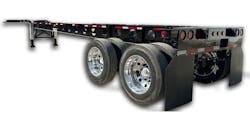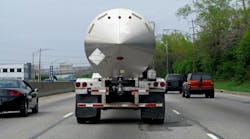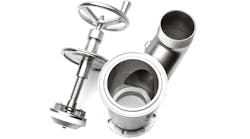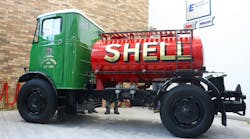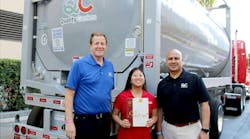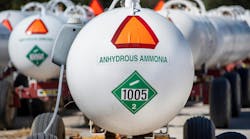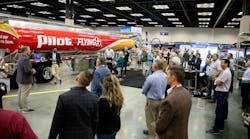With a strong partnership in place — and getting stronger by the day — managers at Brenner Tank LLC and Poly-Coat Systems Inc believe they are well positioned to capture a greater share of the composite tank trailer market. The partnership has been in place since 2006.
Steps taken to enhance the partnership include an agreement to turn over marketing responsibilities to Brenner's sales force. The two companies are working together closely to develop a range of new products. In addition, Poly-Coat Systems expects to finish construction on a significantly larger production facility for fiberglass reinforced plastic cargo tanks by mid 2008.
Bruce D Yakley, Brenner Tank president and chief operating officer, says the tank trailer builder has high hopes for the partnership. “Brenner has always valued innovation and has designed tanks that meet each customer's unique needs,” he says. “We've been fortunate to find a company such as Poly-Coat to partner with in developing composite tanks. It is great being associated with an industry leader of FRP tanks.”
George Felix, president of Poly-Coat Systems, adds that the combination of Poly-Coat Systems' advanced composite technology and Brenner's excellent engineering provides an opportunity to develop new models and expand applications for composite trailers over the next several years.
Under the partnership, Poly-Coat Systems manufactures FRP cargo tanks at its Houston, Texas, plant. The new facility is in Liverpool, south of Houston. Poly-Coat completes more than one tank a week now, but production volumes are expected to increase in the new plant.
Finished tanks are transported by flatbed to the Brenner Tank Services LLC shop in Houston. Brenner shop workers assemble the trailer frame and mount the FRP tank on the frame. The shop turns out approximately six trailers a month.
“We could build as many as 20 trailers a month once the new Poly-Coat plant comes on line,” says Bill Stone, president of Brenner Tank Services. “These trailers typically are used to transport corrosives, and we believe we are on the leading edge with the tank of the future. Many of our customers are switching to FRP tanks from carbon steel MC312 and DOT412 carbon steel tanks. We plan to bring out new products in the near future.”
Built under DOT412 exemption, the typical composite tanker marketed by the Brenner/Poly-Coat partnership has a 5500-gallon capacity, 53-psi test pressure, and 35-psi working pressure. Tank hardware includes a Poly-Coat manway and domelid and Girard pressure-relief vent.
The tank is mounted on a stainless steel frame. Running gear includes Brenner's proprietary Hendrickson Intraax air suspension with MeritorWABCO antilock braking.
The following photographs depict the trailer assembly process:
A newly assembled Brenner/Poly-Coat fiberglass reinforced plastic (FRP) tank trailer rolls out of the Brenner Tank Services LLC shop in Houston TX. The 5500-gallon DOT412 tanker will be used to transport acids. Brenner Tank LLC and Poly-Coat Systems Inc recently announced that they are expanding their partnership to build and market the FRP tank trailers. [right] Workers at the Poly-Coat Systems plant in Houston TX apply a series of fiberglass layers to a tube that is beginning to take shape as a cargo tank. The initial fiberglass layers will be followed by a balsa wood layer and then more fiberglass layers.
Agustin Rubio moves a completed FRP cargo tank to the Brenner Tank Services trailer assembly bays. The tanks are transported on flatbed for the short trip from the Poly-Coat Systems plant to the Brenner shop.
Frame sections are fabricated at the Brenner Tank Services LLC plant in Mauston WI. They are shipped four sets at a time to the Houston plant. Frame sections are constructed of quarter-inch stainless steel and consist of the frame rails with tank cradle assembly, running gear subframe, and landing gear subframe.
Antonio Mireles [left] and Michael Fluker position frame sections in one of the six bays that are available for FRP trailer assembly at the Brenner shop in Houston. The shop is producing about six a month currently.
Mireles completes welds on the dolly subframe. It takes the good part of a day to weld up all of the frame sections. Wheels and tires are mounted once the welding is complete to make it easier to reposition the chassis as needed.
Next, the FRP tank is moved to the shop and is set on the chassis. Brenner uses a 7.5-ton overhead crane to maneuver the tank into position.
Luis Lopez makes sure the tank is positioned correctly before it is lowered into the frame cradle. The tank and frame must line up precisely for proper positioning of the bottom outlet over the suspension.
Lopez inserts the wiring in the Midland nose box that contains the electrical socket and gladhand connections. In most cases, the wiring and air lines are installed before the tank is placed on the chassis.
Lopez positions a rubber cushion that goes under one of eight steel bands that are used to attach the FRP cargo tank to the chassis. Rubber cushions also line the cradles. The cushions are made of a specially formulated rubber with minimal compression. The cushions help prevent the tank and frame from rubbing together.
Mireles sets one of the eight steel bands in place. The bands are fabricated from 12-gauge stainless steel, and two threaded studs are welded at each end. The bands keep the tank from moving on the chassis.
Lopez bolts a steel band into place. Each band is tightened to 90 ft/lb.
Mireles completes installation of a fender on the trailer. Hose trays and air lines for product handling also are installed.
Lopez and Mireles bend stainless steel tubing for the rear-mounted ladder and work platform.
Lopez and Mireles make some adjustments during assembly of the ladder and work platform. They modify Brenner's safety ladder for use on the FRP trailers.
A Light box at the rear of the trailer is wired by Lopez, and the Grote light kit is installed.
An air-operated butterfly valve is readied for installation. Customers specify the type of valve to be used.
Mireles bolts the valve and discharge piping to the bottom outlet flange.
In one of the final steps, Shon Brungardt checks for piping and valve leaks. Final steps include a complete inspection of the trailer, brake test, wheel alignment, and dataplate installation.
